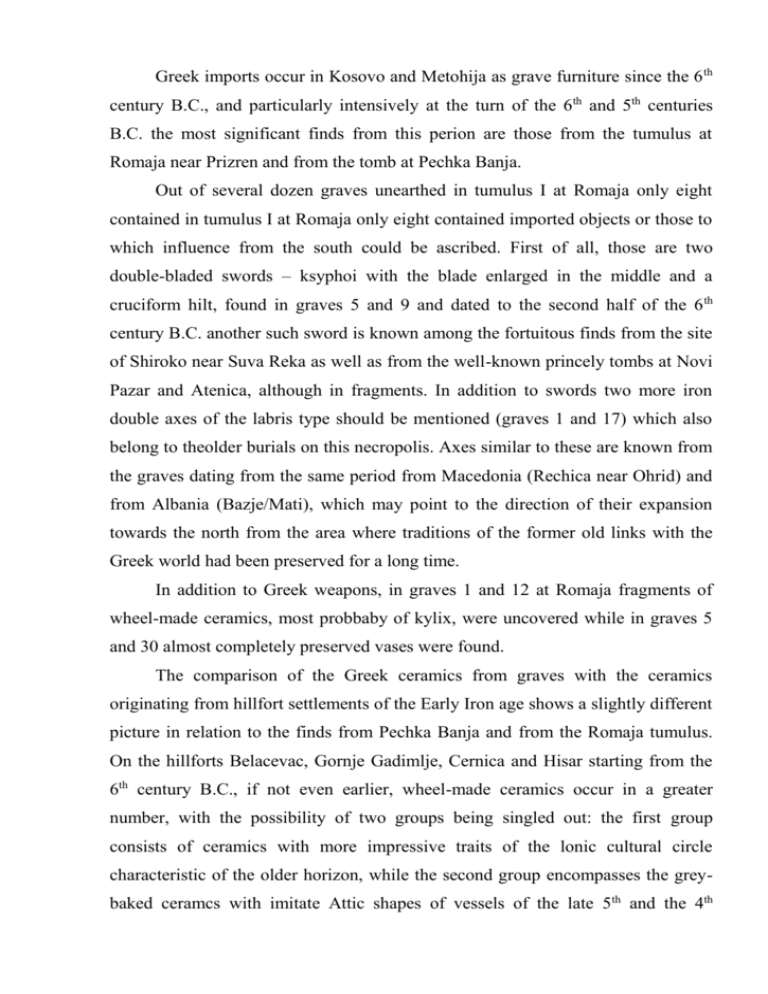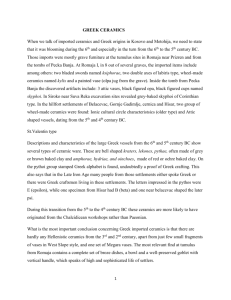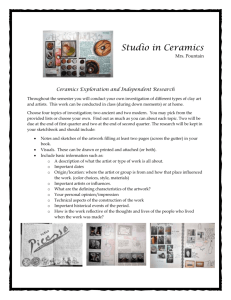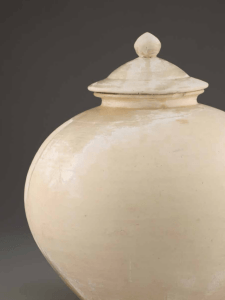Sokolovskaya_06
advertisement

Greek imports occur in Kosovo and Metohija as grave furniture since the 6 th century B.C., and particularly intensively at the turn of the 6 th and 5th centuries B.C. the most significant finds from this perion are those from the tumulus at Romaja near Prizren and from the tomb at Pechka Banja. Out of several dozen graves unearthed in tumulus I at Romaja only eight contained in tumulus I at Romaja only eight contained imported objects or those to which influence from the south could be ascribed. First of all, those are two double-bladed swords – ksyphoi with the blade enlarged in the middle and a cruciform hilt, found in graves 5 and 9 and dated to the second half of the 6 th century B.C. another such sword is known among the fortuitous finds from the site of Shiroko near Suva Reka as well as from the well-known princely tombs at Novi Pazar and Atenica, although in fragments. In addition to swords two more iron double axes of the labris type should be mentioned (graves 1 and 17) which also belong to theolder burials on this necropolis. Axes similar to these are known from the graves dating from the same period from Macedonia (Rechica near Ohrid) and from Albania (Bazje/Mati), which may point to the direction of their expansion towards the north from the area where traditions of the former old links with the Greek world had been preserved for a long time. In addition to Greek weapons, in graves 1 and 12 at Romaja fragments of wheel-made ceramics, most probbaby of kylix, were uncovered while in graves 5 and 30 almost completely preserved vases were found. The comparison of the Greek ceramics from graves with the ceramics originating from hillfort settlements of the Early Iron age shows a slightly different picture in relation to the finds from Pechka Banja and from the Romaja tumulus. On the hillforts Belacevac, Gornje Gadimlje, Cernica and Hisar starting from the 6th century B.C., if not even earlier, wheel-made ceramics occur in a greater number, with the possibility of two groups being singled out: the first group consists of ceramics with more impressive traits of the lonic cultural circle characteristic of the older horizon, while the second group encompasses the greybaked ceramcs with imitate Attic shapes of vessels of the late 5th and the 4th century B.C. In addition to these, relatively rare specimens of black-varnished and red-figure ceramics of the St. Valentin type occur as well. It can be noted that among the ceramic wares in Kosovo hillforts there are hardly any Hellenistic ceramics dating from the 3rd to the 2nd century B.C. with the exception of a few small fragments of vases decorated in the West Slope style, although a number of grey ceramic wares of indigenous manufacture can be considered to belong to this period.







